The purpose of this activity is to support students using their knowledge of addition and subtraction basic facts to ten to solve difference problems.
- Counters (circular, square or novelty counters)
- Number strips to 20
- Masking sheets (half A4 size)
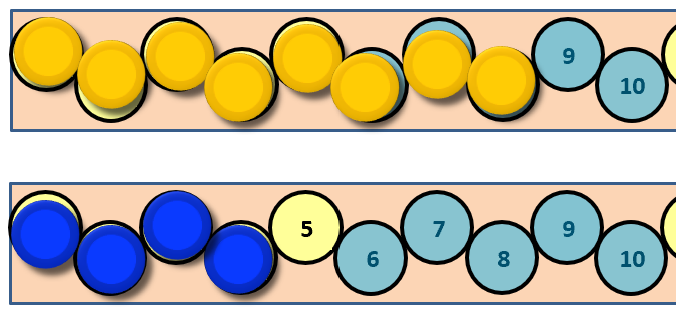 Pose difference problems with numbers to ten. Make each addend in the problem using a separate number strip, then mask the sets. For example:
Pose difference problems with numbers to ten. Make each addend in the problem using a separate number strip, then mask the sets. For example:
You have 8 yellow counters and I have 4 blue counters.
How many more counters do you have than I have? How do you know this?
Look for students to think of 4 + 4 = 8 as a related number fact, and to fluently name four as the difference.
- Regardless of whether the students are able to solve this problem, uncover the sets, and discuss how the counters can be used to solve the problem.
How could we find out how many more yellow counters there are than blue counters?
If students answered the problem fluently, encourage them to consider how difference problems might be solved with ‘trickier’ number. This can be done by illustrating the two main strategies using the counters and number strips:- Adding more counters onto the blue set of counters means the total number of blue and yellow counters becomes the same. In turn, the problem can be worded as: How many blue counters do I add to have the same number as yellow? The equation for this calculation is 4 + [ ] = 8.
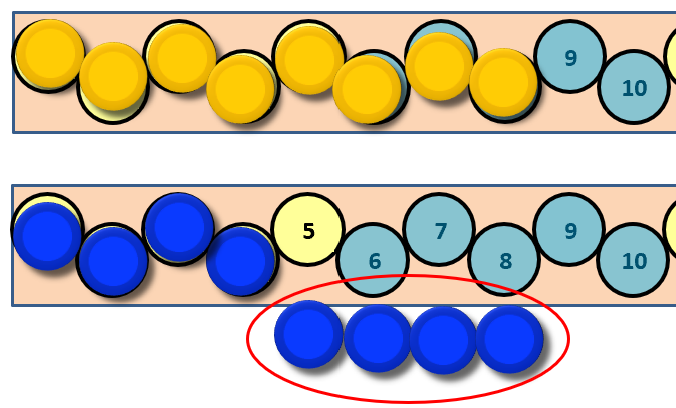
- Subtracting the smaller set of counters from the larger set of counters (e.g. removing four counters from each set) means that only the difference remains. In turn, this problem can be reworded as If I take the smaller set of counters from the larger set, how many counters are left? The equation for this calculation is 8 - 4 = [ ].
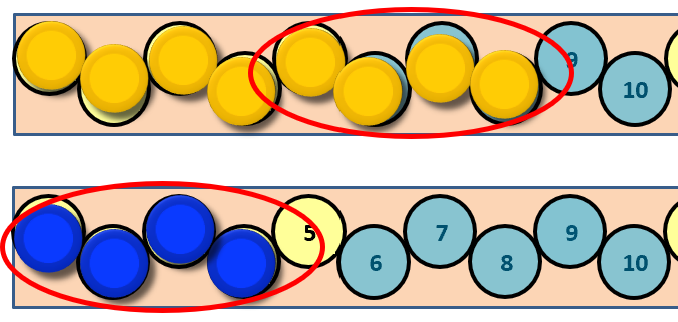
- Adding more counters onto the blue set of counters means the total number of blue and yellow counters becomes the same. In turn, the problem can be worded as: How many blue counters do I add to have the same number as yellow? The equation for this calculation is 4 + [ ] = 8.
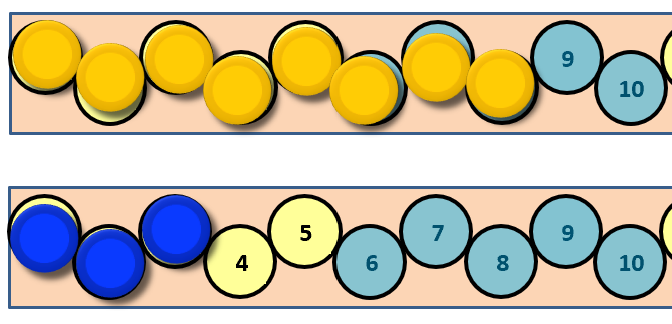 Pose similar problems by representing the numbers on number strips and then masking both strips. Gradually increase the difficulty of the basic facts that students need to use.
Pose similar problems by representing the numbers on number strips and then masking both strips. Gradually increase the difficulty of the basic facts that students need to use.
You have 8 yellow counters and I have 3 blue counters.
How many more counters do you have than I have?
Record the two possible strategies as equations.
Look for students to use one of the two strategies illustrated previously, and to express the operations using suitable equations: 3 + [ ] = 8 and 8 - 3 = [ ].
- Vary the amount of difference students are required to find to highlight different situations in which addition can be more effective than subtraction, and vice versa. Subtraction is often more suitable to problems where the difference between two numbers is larger, or where the smaller number of the two is very small.
Examples might be:- You have 9 yellow counters and I have 2 blue counters.
How many more counters do you have than I have? (Subtraction is better because the difference between the two numbers is larger and the 2 is much smaller than 9) - You have 10 yellow counters and I have 8 red counters.
How many more counters do you have than I have? (Addition is better because the difference between the two numbers is very small).
- You have 9 yellow counters and I have 2 blue counters.
- Challenge the students to solve open difference problems like:
You have a set of red counters. I have a set of blue counters.
You have three more counters than me.
How many counters do we each have?
Ask students to work together to explore what different addition and subtraction equations can be used to represent this problem. Consider allowing them to express their mathematical thinking in different ways (e.g. written, verbal, drawn diagrams, acting out, using physical manipulatives). Te reo Māori kupu such as tāpiri (add), tango (subtract), and huatango (difference in subtraction) could be used throughout these activities.
- As a class, create a set of possible answers. For example:
- A problem involving 10 red counters and 7 blue counters might be represented as 7 + 3 = 10 or as 10 - 3 = 7.
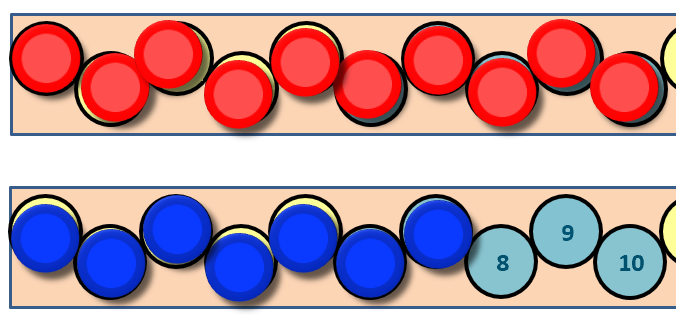
- A problem involving 7 red counters and 4 blue counters might be represented as 4 + 3 = 7 or as 7 - 3 = 4.
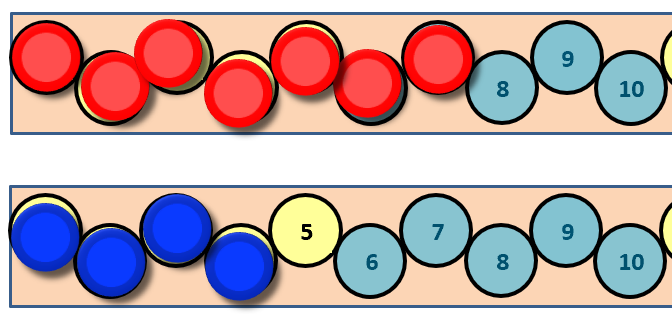
- For each set of possible answers, record the equations in sequence to check for omissions. For example: 7 + 3 = 10, or 10 - 3= 7; 6 + 3 = 9, or 9 - 3 = 6; 5 + 3 = 8, or 8 - 3 = 5.
- Ask related difference problems outside the set of facts, such as:
You have 3 more counters than me. I have 10 counters. How many do you have?
Next steps
Increase the level of abstraction by covering the materials, asking anticipatory questions, and working more with symbols than real objects.
A suggested sequence for extending the difficulty of the differences is:
- Finding differences with doubles (e.g. 6 - [ ] = 3)
- Finding differences with ‘five and…’ facts (e.g. 7 - [ ] = 5)
- Finding differences with facts for ten (e.g. 10 - [ ] = 7)
- Finding differences with more difficult facts within ten (e.g. 9 - [ ] = 3)